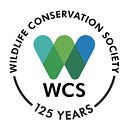WCS 3-Sentence Science
Using Animal Behavior to Establish Protected Areas
September 6, 2019
Each year, Wildlife Conservation Society scientists publish more than 300 peer-reviewed studies and papers. “WCS 3-Sentence Science” is a regular tip-sheet — in bite sized helpings — of some of this published work.
Here we present work by WCS’s Joel Berger examining how the work of behavioral ecologists can be critical to the establishment of protected areas.
- Protecting wild places is conservation’s most pressing task given rapid contemporary declines in biodiversity and massive land use changes.
- In this opinion piece, authors suggest that that the in-depth studies by behavioral ecologists on wildlife may have an important role in conservation by elevating species’ status from mundane to charismatic and often sparking public empathy; and in protected areas that sanction exploitation, it may also be important to understand individual animals’ behavioral and life-history responses to management decisions.
- More generally, behavioral ecologists will only be listened to, and their contributions considered of conservation importance, if they become more involved in decision-making processes as witnessed by several prominent examples that have supported the establishment of protected areas.
Study and Journal: “Can behavioural ecologists help establish protected areas?” from Philosophical Transactions of the Royal Society B: Biological Sciences
WCS Co-Author(s): Joel Berger, WCS North America Program
For more information, contact: Stephen Sautner, 718–220–3682, ssautner@wcs.org.
